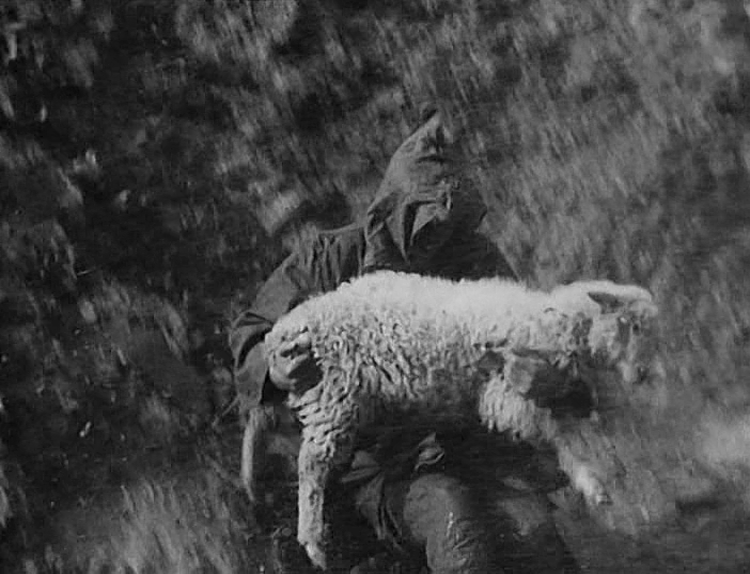
A film about Armenia’s shepherds. A measured glance at the contradictory yet also harmonious relation between man and nature, scored to Vivaldi’s Four Seasons.
“How to speak of his films? Of the image, pulsating like the oscillations of an electrocardiogram? And of the sound, true echo of space? How can one forget the beginning of The Seasons? Armenian shepherds and their animals caught in a torrent where they may be drowning, head over heels? Peasants fleeing before unleashed haystacks or hurtling down slopes, here of snow, there of rock? This brief intertitle fallen from the sky: “This is the land”. But it is a land with no North, filmed, perhaps, from the viewpoint of a meteorite which doesn’t know where it falls.”
Serge Daney1
Jean-Luc Godard: Being something of a pessimist, I see the end of things before their beginning. For me, cinema is the last manifestation of art, which is a Western idea. Great painting has vanished, great novels have vanished. Cinema was, if you like, a language before Babel, which everyone understood without needing to learn it. Mozart played to princes, the peasants weren't listening, whereas Chaplin played for everybody. The film-makers went in search of the foundations of what is unique about film, and this kind of search is, yet again, something very occidental. It is montage. They talked about it a great deal, especially during times of change. In the twentieth century the biggest change of all was the transformation of the Russian Empire into the USSR; logically, it was the Russians who made the greatest progress in that search, simply because with the revolution society was itself making a montage of before and after.
Artavazd Peleshian: Film relies on three factors: space, time and real movement. These three elements exist in nature, but among the arts it is only cinema that rediscovers them. Thanks to them it is possible to find the secret movement of matter. I am convinced that film is able to speak the languages of philosophy, science and art, all at the same time. Perhaps this is the unity that the ancient world was seeking.2
“A birth without a bearer: imagine a monster that devours the person from whom he came. Or perhaps a process in which some die while ignoring the fact that they are giving birth, while others, while being born, ignore the fact that they kill.
I am not sure if these are the right terms that capture the essence of this method or theory but, for now, it seems to me the most accurate definition.”
Artavazd Peleshian3
- 1Serge Daney, « À la recherche d’Arthur Pelechian, » Libération, August 11, 1983. [Translation by Daniel Fairfax and Laurent Kretzschmar, 2012.]
- 2Jean-Michel Frodon, « Un langage d'avant Babel : conversation entre Artavazd Pelechian et Jean-Luc Godard, » Le Monde, édition du 2 avril 1992. [Translation via Kino Slang.]
- 3Artavazd Peleshian, “Montage-at-a-Distance, or: A Theory of Distance,” Moe Kino, Erevan: Sovetakan Grogh, 1988. As published in LOLA, December 2015.

